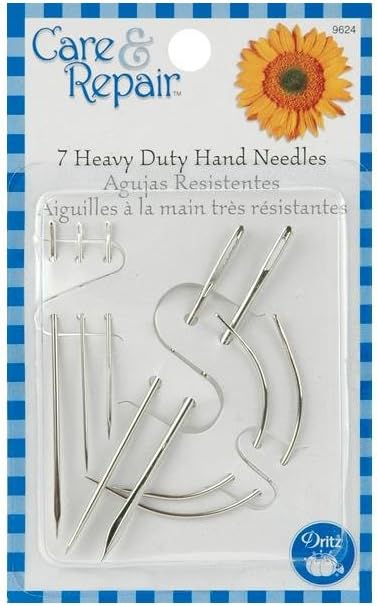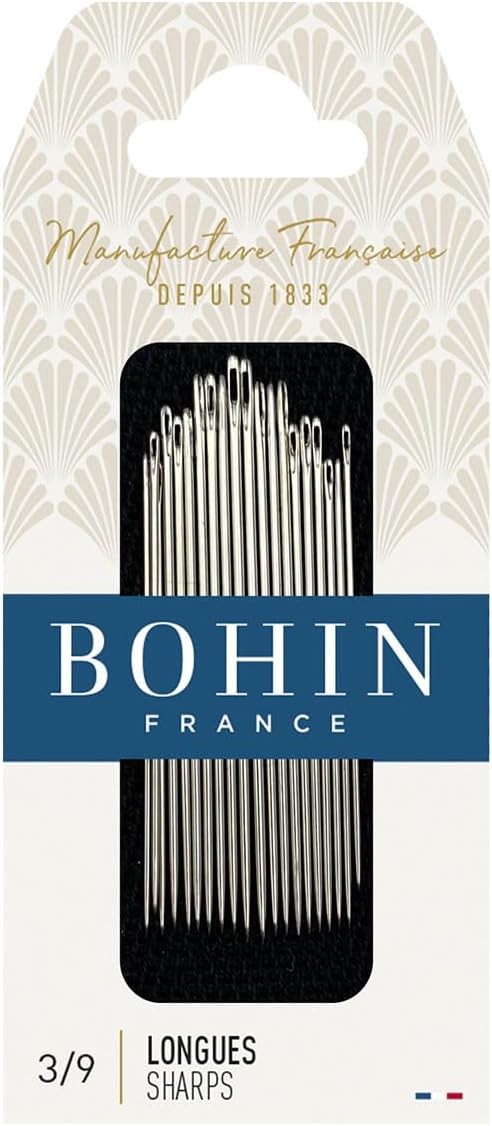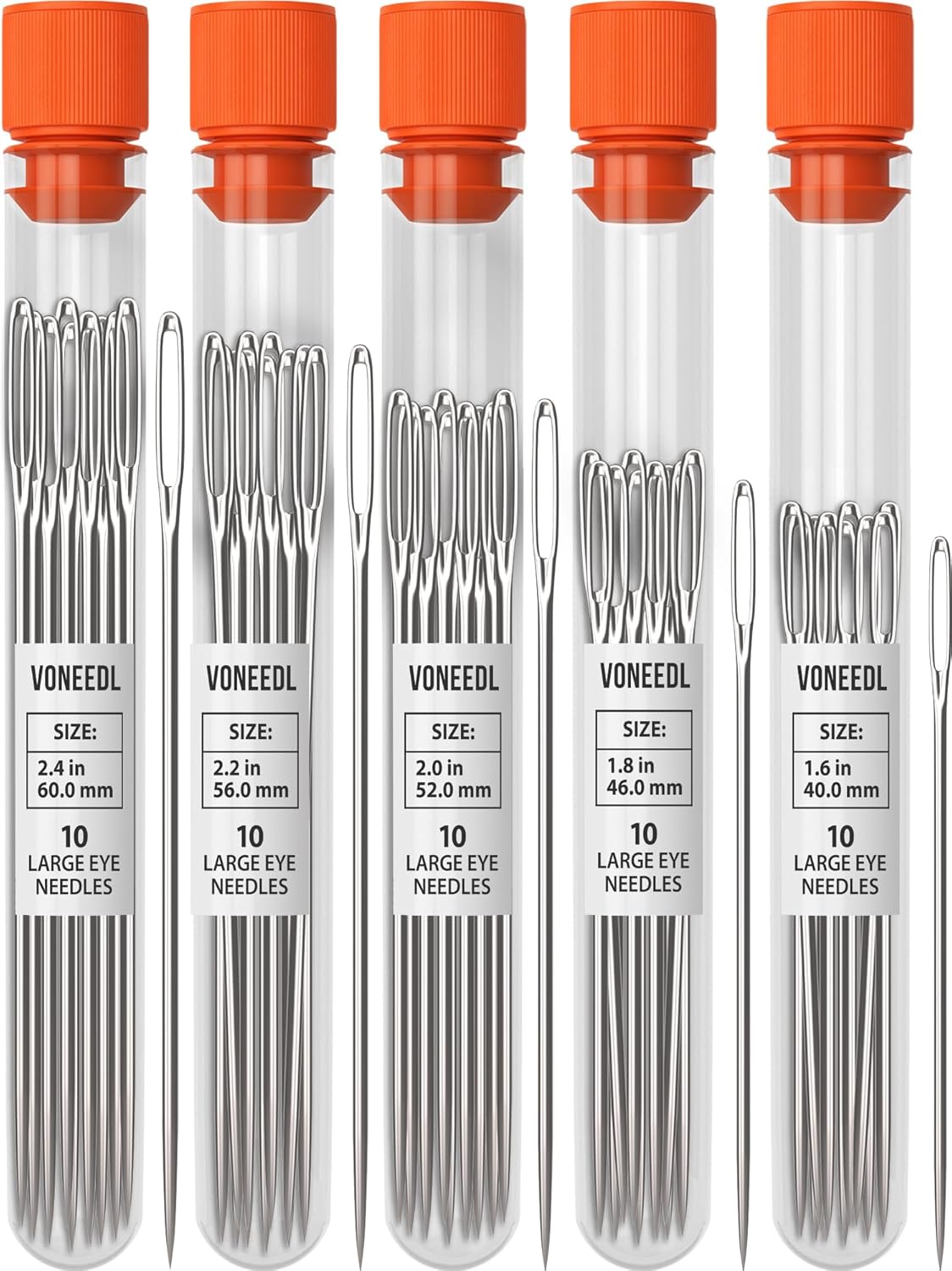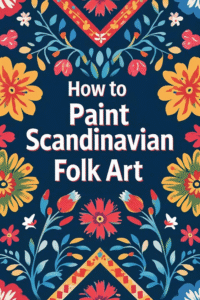Hand sewing is an art. Whether you’re mending a tear in your favorite shirt, sewing on a button, or diving into a new quilting project, the right needle can make a world of difference.
Choosing the best needle for hand sewing isn’t always as simple as picking one off the shelf. With so many types, sizes, and materials, it’s easy to feel overwhelmed. But don’t worry I’ve got you covered.
In this guide, I’ll walk you through the different kinds of needles, their uses, and how to choose the best one for your projects.
| Product Image | Product Name | Features | Price |
|---|---|---|---|
 |
FIVEIZERO 80/40 PCS Large Eye Sewing Needles | Premium Stainless Steel Material This set includes 40 large-eye needles in 7 sizes Durable Iron Box Packaging Versatile Use Across Materials |
Check Price |
 |
Singer Large Eye Hand Needles On Magnet, 12-Count | Magnetic Needle Holder Includes 12 hand sewing needles in sizes 16 through 22 Nickel-Plated Steel Construction |
Check Price |
 |
Large Eye Sewing Needles, Embroidery Needles | 25 stainless steel sewing needles Premium Large Eye Needles Available in 5 lengths Wooden Needle Case |
Check Price |
 |
Dritz 9624D Assorted Heavy Duty Hand Needles | Heavy-Duty Needles for Thick Fabrics 7 hand sewing needles in assorted sizes Durable Nickel Construction Slim and easy to store in your sewing kit or drawer |
Check Price |
 |
30 Pack Premium Hand Sewing Needles | 30-Piece Hand Sewing Needle Set Gold-Plated Needles for Smooth Stitching Crafted from 304 stainless steel with a gold-plated end Large Eye Design for Easy Threading |
Check Price |
 |
DMC 1765-5 Embroidery Hand Needles | Alloy steel with premium-grade nickel plating Sleek silver finish Long Eye Design Sharp Point for Clean Piercing |
Check Price |
 |
Bohin Sharps Hand Needles | Crafted from high-quality silver-toned metal Sharp Point for Clean Stitching Needles offer strength, durability, and smooth stitching performance |
Check Price |
 |
VONEEDL 50 PCS Large Eye Sturdy Hand Sewing Needles | Heavy-Duty Stainless Steel Needles for Thick Fabrics Includes 50 large-eye needles in 5 lengths Extra-Large Eyes for Easy Threading High-Quality Stainless Steel |
Check Price |
 |
Dritz Gold-Eye Big Stitch Quilting Needles | Gold-Eye Needles for Big Stitch Quilting Stainless steel Premium Build & Materials |
Check Price |
Different Types of Needles
Not all needles are created equal. To get the best results, you need to understand the distinctions between various types of needles. Here’s a breakdown of the most common ones:
| Needle Type | Best For | Key Features |
| Universal Needles | General purpose sewing | Slightly rounded point, works on most fabrics |
| Ballpoint Needles | Knit fabrics and stretchy materials | Rounded tip to slide between fibers |
| Jeans/Denim Needles | Heavy fabrics like denim and canvas | Strong shaft and a thick, sturdy needle |
| Quilting Needles | Quilting and layered fabrics | Tapered point to prevent fabric damage |
| Embroidery Needles | Decorative stitching and embroidery | Larger eye for embroidery thread |
| Leather Needles | Leather and vinyl fabrics | Slotted shaft to accommodate thick materials |
Universal Needles
As the name suggests, these are your go-to needles for general sewing. Universal needles have a slightly rounded point, making them versatile enough to work with a variety of fabrics, including cotton, polyester, and blends. They are perfect for basic repairs or crafting projects.
Tip: If you’re unsure which needle to use, a universal needle is always a safe bet!
Ballpoint Needles
Ballpoint needles are great for knits, jerseys, and other stretchy fabrics. The rounded tip allows the needle to glide between the threads, preventing snags or runs in the fabric.
These needles are a must-have if you’re working with fabrics like spandex, stretchy cotton, or any knit materials.
I’ve worked on several knit garment projects, and using a ballpoint needle has saved me a lot of frustration. It creates smooth, snag-free seams.
Jeans/Denim Needles
For heavy-duty projects like jeans, canvas, or upholstery fabric, you’ll need a strong, durable needle enter the jeans/denim needle.
These needles feature a thicker shaft and a strong, sharp point that can pierce through heavy materials with ease. They also have a larger eye to accommodate thicker threads.
Tip: When sewing through thick fabrics, don’t try to force the needle. Let the strong denim needle do the work!
Quilting Needles
Quilting projects often require sewing through multiple layers of fabric. Quilting needles are specially designed with a tapered point that allows them to penetrate multiple layers without damaging the fabric or the quilt batting. They also help avoid skipped stitches, which can be a common issue when quilting.
Case Study: When I was working on my first quilt, I struggled with fabric shifting and skipped stitches until I switched to a quilting needle. It made the stitching process so much smoother.
Embroidery Needles
If you’re planning on adding some decorative stitching or embroidery to your projects, you’ll want to use an embroidery needle.
These needles have a larger eye that can accommodate specialty embroidery threads like rayon or metallics without causing the thread to fray.
Tip: For intricate embroidery, always use an embroidery needle it’s a game-changer for detailed designs.
Leather Needles
Leather and vinyl require a needle that’s specially designed to handle the tough texture of these materials.
Leather needles feature a unique slotted shaft that allows them to cut through leather or vinyl without leaving holes or damaging the material.
I once made a leather wallet as a gift and was amazed at how the leather needle glided through the material. Without it, I would have struggled, and the stitching would have been uneven.
How to Choose the Right Needle for Your Project
Selecting the right needle is all about understanding your project and the fabric you’re working with. Here’s how you can choose the perfect needle:
Step 1: Identify Your Fabric Type
The first thing to consider is the type of fabric you’re working with. If you’re sewing lightweight cotton, a universal needle will do just fine. For thicker fabrics like leather or denim, you’ll need something stronger, like a jeans needle.
Step 2: Consider the Thread You’re Using
The type of thread you use also matters. For regular sewing thread, a standard universal needle should work, but for specialty threads (like embroidery threads), a needle with a larger eye is necessary.
Step 3: Needle Size Matters
Needle sizes range from 60/8 to 120/19, with smaller numbers indicating finer needles and larger numbers for heavier fabrics. A size 70/10 needle works well for lightweight fabrics, while a size 100/16 is perfect for heavier materials.
Step 4: Check the Needle’s Point
The point of the needle will depend on your fabric. A ballpoint needle is best for knits, while a sharp needle is perfect for woven fabrics. If you’re working with heavy fabrics, opt for a needle with a stronger shaft to avoid breakage.
Common Mistakes to Avoid
While choosing a needle might seem like a simple task, there are a few common mistakes that can affect your sewing project:
Mistake 1: Using the Wrong Needle for the Fabric
It’s easy to think that one needle fits all, but the wrong needle can cause problems like skipped stitches, fabric damage, or even needle breakage. Always match your needle to your fabric.
Mistake 2: Not Changing the Needle Regularly
Over time, needles get dull, and using a dull needle can lead to poor stitching quality. If you’re noticing that your stitches aren’t as clean or consistent as they used to be, it might be time for a change.
Mistake 3: Forcing the Needle Through Thick Fabrics
If you’re working with heavy fabrics, like denim or leather, don’t try to force a regular needle through them. A needle designed for thicker materials will make the job much easier and will help prevent damage to both the fabric and the needle.
Tip: I’ve learned the hard way always use the right needle for heavy-duty fabrics to avoid frustration!
Tips for Keeping Your Needles in Top Condition
Just like with any tool, taking care of your needles will ensure they last longer and work better. Here are some tips:
- Keep them organized: Store your needles in a safe place, preferably in a needle case, so they don’t get bent or damaged.
- Clean your needles: Wipe them with a clean cloth to remove any lint or fabric residue that may have accumulated.
- Replace when necessary: If you notice any bending, dullness, or difficulty in piercing the fabric, it’s time to replace the needle.
- Use the right needle for the job: As mentioned earlier, using the right needle for the fabric type will prevent unnecessary wear and tear on your needles.
Conclusion
Choosing the best needle for hand sewing is not just about picking something that looks good. It’s about understanding your fabric, thread, and project to select the perfect tool that will help you create beautiful, durable stitches.
Whether you’re a beginner or an experienced sewer, knowing which needle to use and when will elevate your sewing projects.
- Different fabric types require different needles make sure to choose the right one.
- Regularly check and replace your needles to ensure smooth stitching.
- Take care of your needles by storing them properly and cleaning them after use.
So, the next time you pick up a needle, you’ll know exactly which one to choose. Start experimenting with different types and find the best one that works for you!
Now that you’ve learned about the different needles and how to choose the right one, I’d love to hear about your hand sewing projects!
What needle do you use most often? Leave a comment below and share your sewing tips.
Don’t forget to share this post with your fellow crafters it might just save them from a few sewing struggles!
FAQs
Q1: Can I use a universal needle for all fabrics?
While a universal needle can be used for most fabrics, it’s best to match your needle to the fabric type. For stretchy fabrics, a ballpoint needle is ideal.
Q2: How do I know when my needle is dull?
If your needle starts leaving uneven stitches or is having trouble piercing the fabric, it’s time for a new one.
Q3: What size needle should I use for lightweight fabrics?
For lightweight fabrics, a needle size between 60/8 and 70/10 is usually best.
Q4: Can I use a denim needle on lightweight fabrics?
Denim needles are designed for heavy fabrics, so it’s best to use a universal needle for lightweight materials.
Q5: How often should I change my hand sewing needle?
It’s a good idea to change your needle after every few projects or if you notice any signs of wear, like bending or dullness.

